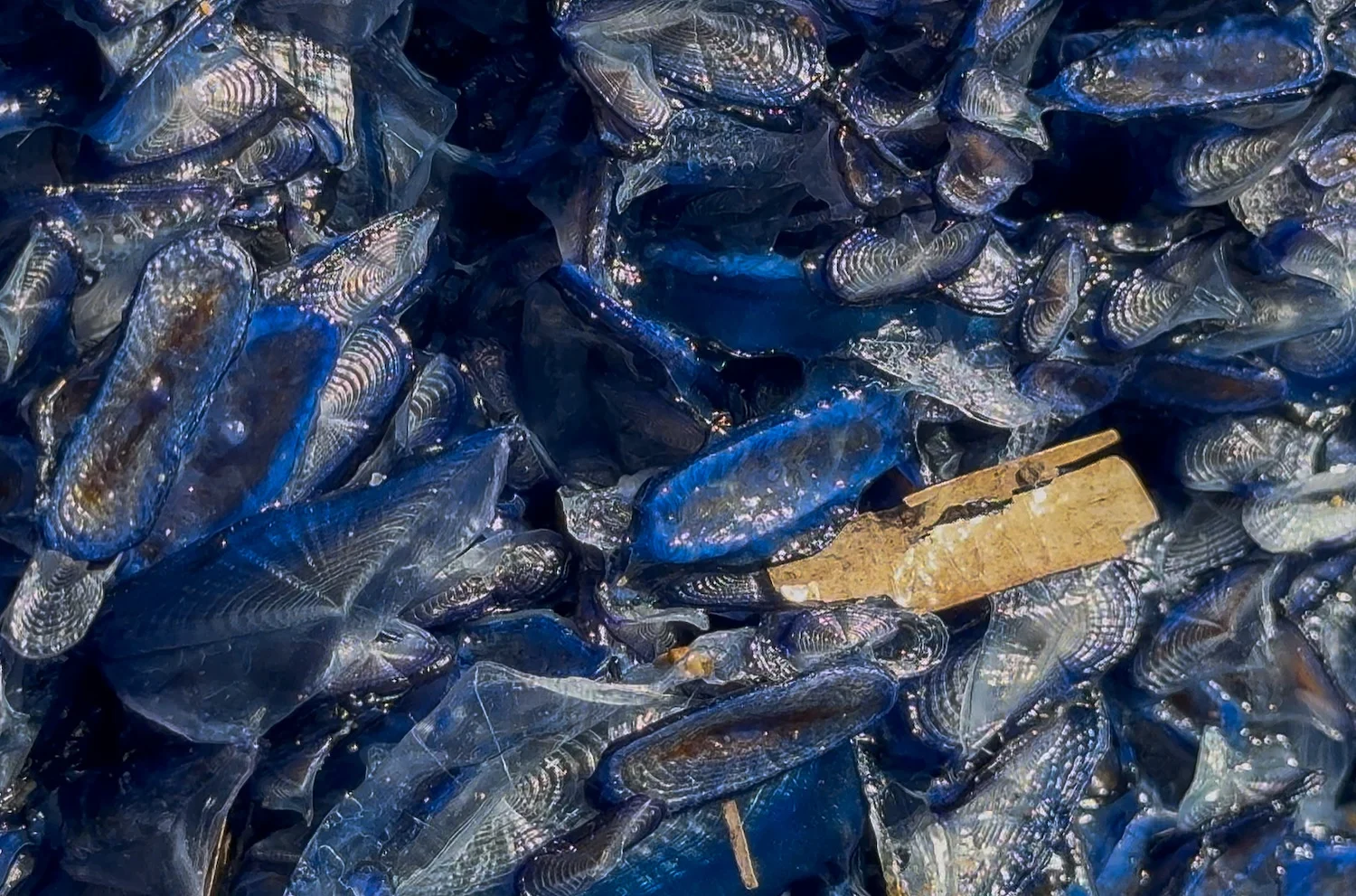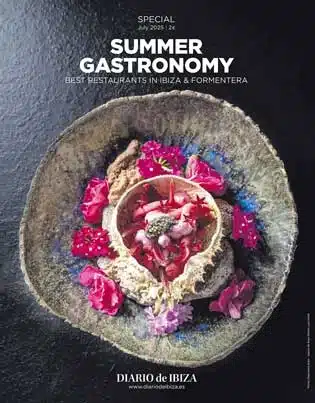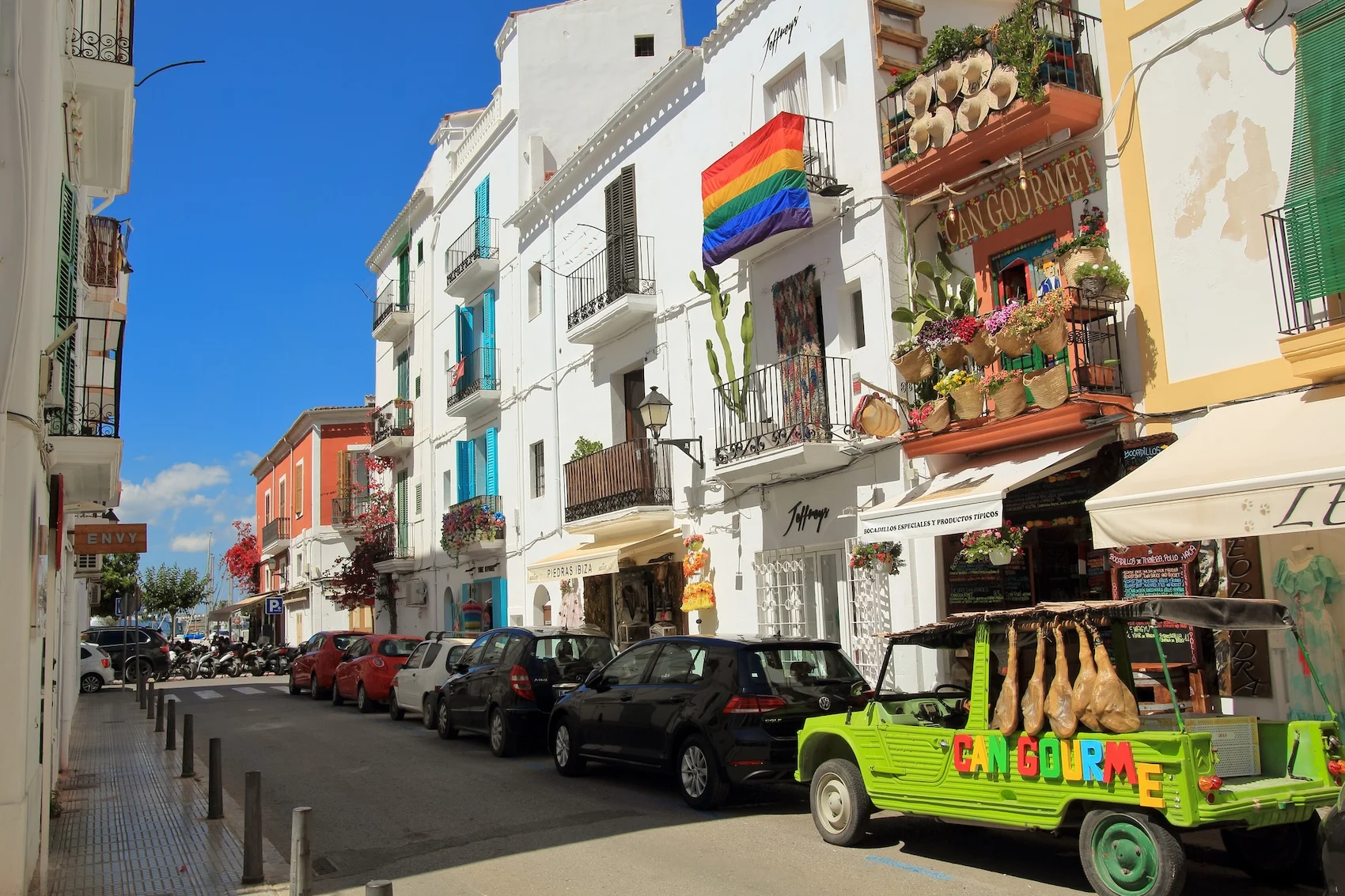If you’ve visited the beaches of Ibiza in the past few days, you may have been surprised by an unusual sight: brilliant blue creatures scattered across the sand, resembling tiny boats adrift on the shore. These are Velella velella, known in English as by-the-wind sailors, and they’ve arrived by the thousands – possibly tens of thousands – turning parts of the coast into surreal, sparkling carpets of blue.
A natural phenomenon on Ibiza’s coastline
On 29 March, popular beach Benirràs was completely covered in by-the-wind sailors. Punta Galera, another scenic cove on Ibiza’s west coast, also saw large groups washing ashore. This mass stranding is a seasonal phenomenon often seen during the transition between winter and spring, as changes in wind and ocean currents push surface-dwelling marine life closer to land.
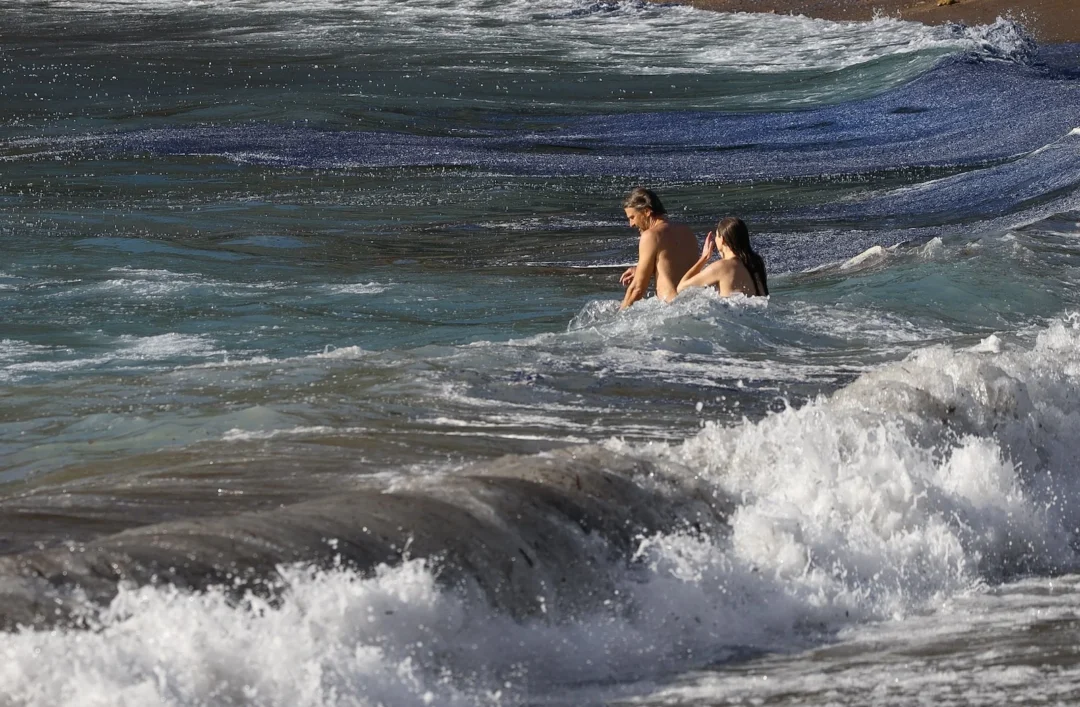
Photographer Santi Tur, known on Instagram as @atfunk, captured stunning images of the event. “We were blown away”, he said. “There were hundreds of thousands, everywhere you looked”.
These events are not new to Ibiza, but each time they happen, they generate curiosity and amazement among visitors and locals alike. The blue creatures often appear suddenly overnight, covering vast stretches of sand by morning.
Are they dangerous?
Despite their jellyfish-like appearance, Velella velella are not actually jellyfish – and they’re not dangerous to humans. They belong to a group of marine animals called siphonophores, which are colonies of tiny, specialised organisms called zooids that function together as a single animal.
By-the-wind sailors are generally harmless, and their sting is extremely mild – at worst, it may cause slight skin irritation or a red patch if handled. Unlike some other jellyfish found in Mediterranean waters, you don’t need to worry about stepping on one or brushing past it while swimming. Still, it’s best to admire them without touching, just in case.
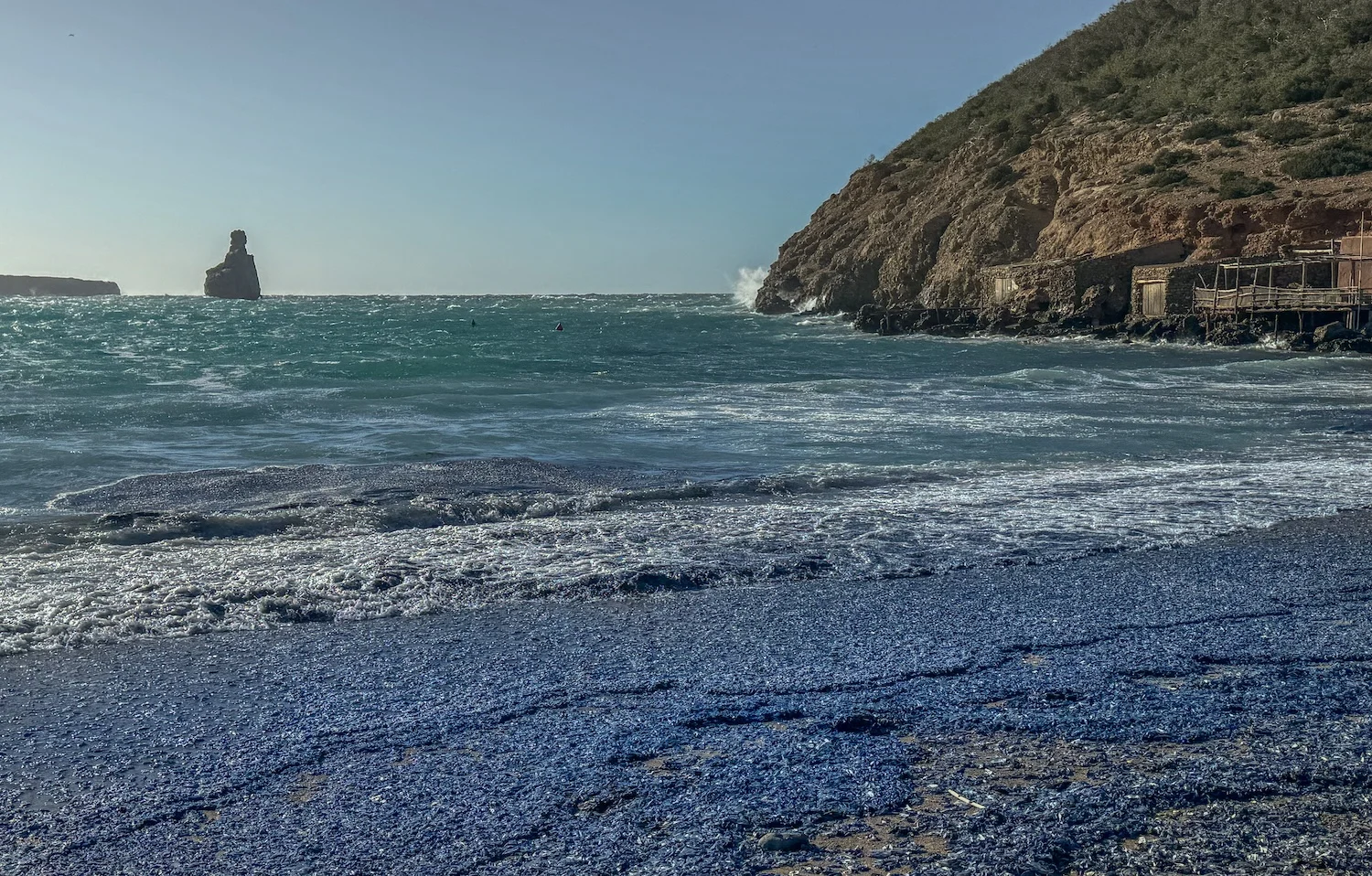
What exactly is a by-the-wind sailor?
These fascinating creatures float on the ocean’s surface thanks to a small, oval-shaped float with concentric air chambers. Their most striking feature is a translucent triangular crest – a natural sail that allows them to move with the wind across the sea.
Their vivid lapis lazuli blue colour makes them stand out dramatically, especially when stranded on pale sand. Although individual specimens are typically a few centimetres long, they can grow up to 8 cm. When washed ashore in large numbers, they create a striking and surreal landscape that’s a magnet for photographers and nature lovers.
A favourite food of sea turtles
Velella velella plays an important role in the marine ecosystem around Ibiza and Formentera. These colonies are a favourite food of sea turtles, particularly loggerhead turtles (Caretta caretta). In the waters south of Formentera, large groups of Velella velella attract juvenile turtles each spring, drawn by the abundance of food created by surface water circulation patterns.
This connection to the larger marine food chain makes their presence not just visually interesting but ecologically significant.
Why are they called ‘barquetes de Sant Pere’?
In Ibiza and other Catalan-speaking regions, by-the-wind sailors are affectionately called barquetes de Sant Pere – ‘Saint Peter’s little boats’. The name comes from their boat-like shape and their association with the sea, echoing Saint Peter’s role as the patron saint of fishermen.
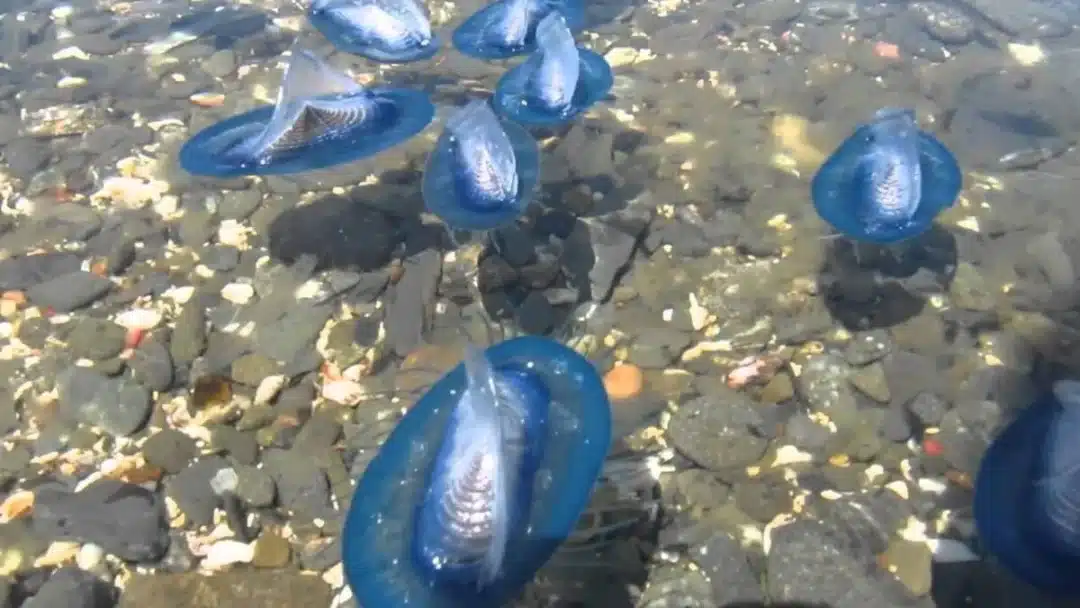
Interestingly, this isn’t the only marine animal with that nickname. The fish known in English as John Dory (Zeus faber) is called gall de Sant Pere in Catalan, also linked to the saint’s symbolism and legend.
What should you know?
If you’re visiting Ibiza this spring and come across beaches covered in these deep blue creatures, consider yourself lucky – you’re witnessing a rare and beautiful natural phenomenon. Feel free to take photos, walk along the shoreline, and observe them up close. Just avoid picking them up, especially if you have sensitive skin.
By-the-wind sailors are completely natural and harmless, and they typically disappear after a few days as tides and winds carry them away or they disintegrate naturally. Their presence is also an indicator of the rich biodiversity in Ibiza’s waters, which includes dolphins, turtles, and many other fascinating marine species.
Ibiza’s springtime wonders
Spring is one of the most underrated seasons to visit Ibiza. Beyond the quieter beaches and mild climate, moments like this remind us of the island’s untamed natural beauty. Whether you’re here for relaxation, adventure, or nature, Ibiza offers unexpected surprises – even in the form of jellyfish-like sailors from the open sea.
So, if you’re planning a beach day in Ibiza and stumble across a carpet of lapis blue creatures, now you’ll know what they are, why they’re here, and why they’re worth pausing to admire.
